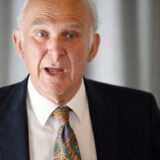The Scottish housing market is at a crossroads and serious decisions must be made in the coming year to ensure there is sufficient housing available to provide homes for Scots according to a leading property firm. DJ Alexander Ltd, which is the largest lettings and estate agency in Scotland and part of the Lomond Group, believes that the property market – homeowners, the private rented sector (PRS), and social housing – has changed immeasurably over the last 30 years but that legislation and government policy has failed to keep up with these changes.
In 1993 37.5% of Scots lived in social housing; 7.0% rented privately; and 55.5% were owner occupied. By 2020 (the latest date for which there are statistics) 23.0% were living in social housing; 14.9% were in the private rented sector; and 58.2% were owner-occupiers.
In terms of actual numbers there were 822,000 social houses in 1993 and there were 608,000 in 2020 which is a drop of 214,000. This is a reduction of 7,642 homes each year for the last 28 years. Since the SNP came to power in 2007 there has been an increase of just 1,000 homes in the social sector.
David Alexander, the chief executive officer of DJ Alexander Scotland, commented: “We need a serious debate on every part of the housing sector in Scotland. The answer to the growing housing needs of our population lies in a blended solution which involves the owner-occupier market, the private rented and social housing sectors combining their efforts to create sufficient homes for people to live in.”
“These figures highlight the failure of successive governments’ on both sides of the Border to build sufficient social housing to meet demand and the consequent growth of the private rented sector to fill this gap over the last three decades.”
David continued: “Yet the Scottish Government has adopted a housing policy which seeks to single out the PRS as being the root cause of housing shortages in Scotland. The truth is that we have over 200,000 social houses less now than in 1993 and the only solution in the meantime has been for people to turn to the PRS to fill this growing need.”
“If the availability of homes in the PRS is encouraged – and there are messages from various MSPs (Green MSP Ross Greer is an example) that disincentivising the PRS is one of the central aims of the current rent freeze policy – then my concern is where are the hundreds of thousands of tenants in the sector going to live in the future.”
David concluded: “What we need is a coherent long-term plan to create a housing policy that reflects the needs and demands of a diverse and changing population. Without the private rented sector there will be no homes for foreign workers, for temporary residents, for those studying or on placement. With a growing social housing waiting list the demand is simply becoming impossible to meet and I believe that if we don’t have a sensible and workable approach in the next year or so then there is a very real risk of a rise in homelessness in Scotland. I believe that opening up communication channels between the various interested parties would be more valuable in ensuring we have a suitable supply of homes in the future. Simply demonising one sector will resolve nothing and is potentially very damaging for the future supply of homes for tenants.”






